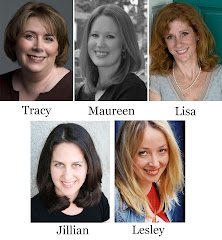While the official topic this week is subplots, for me, that often goes hand-in-hand with the secondary characters in my books. So, I'm going to talk a little bit about both and my take on how secondary characters and subplots can add another level to a story that is being told.
First of all, my experience is 100 percent with novel-length fiction, as I have yet to attempt writing a short story. I would imagine that the shorter word count would make it difficult to incorporate extra elements to any degree of depth, but hey--I could be wrong.
SECONDARY CHARACTERSI rarely begin a new story thinking about secondary characters, so often I'm taken by surprise when someone new shows up in my novels. Obviously, when I wrote A STROKE OF MAGIC, I knew Elizabeth (the heroine from A TASTE OF MAGIC) would be in the book, and when I wrote A BREATH OF MAGIC, I knew that both Elizabeth and Alice (the heroine from A STROKE OF MAGIC) would be on scene and somewhat active. And, for anyone who has read my stories, then they know that Grandma Verda is a must-have secondary character in the entire series.
However, I sporadically have other characters pop up when I'm really not planning on it. When this happens, I tend to trust my instincts and go with the flow, so I can find out what this character is going to bring to the table. Do they have information about the story, or is their presence a catalyst for new conflict, or for asking or answering a question that is important to the journey my heroine is embarking on? Usually, thankfully, this is the case. Usually, and again--thankfully, my instinct/muse/whatever-you-want-to-call-it brings characters in that move the story forward.
Because guess what? If they don't move the story forward in one way or another, then it's very likely that they shouldn't be there. When this happens, I try to figure out why I *thought* I needed that character, and once I find the answer, it's easy for me to incorporate that element, whatever it is, without the use of an unnecessary character. Luckily, this hasn't happened to me very often.
Sometimes, though, a secondary character will breeze in to a scene who stands out. Maybe they're especially quirky and funny, or maybe they have a powerful, charismatic personality that steals the show. Whatever the case, when this happens, it can be really difficult to prune them out of the book once you realize they have no real reason to be there. This has only happened to me once, and I definitely pruned him from that story. But guess what? He's now a character, a very important character, in A BREATH OF MAGIC.
So, my final word on secondary characters is that they should have a purpose that moves beyond being funny, quirky, or charismatic. They MUST be in the story for a reason, otherwise, they're taking up valuable space that is needed by characters who will move the story forward.
SUBPLOTSSubplots are a method used for a variety of reasons. They can enhance the main plotline, set up a future story (in the case of a series, as an example), or shed light on motivation, conflict, or other areas of the story that is being told, but might not have any seemingly obvious connection to the main plot, at least not at first.
Basically, think of subplots the same way as secondary characters: they must be there for a purpose, and usually--okay, almost always--that purpose has something to do with the main storyline.
Sometimes the protagonist is the character who is up to her/his eyeballs in the subplot, but it doesn't have to be. It can be the antagonist, the protagonist's best friend/sister/lover/etc, or another character the protagonist hasn't even met yet. But somehow, in one way or another, the subplot is an integral portion of the story, or--as I already said--is leading to the next story if the book is within a series. Some subplots are hefty, taking up significant space on the page, and other subplots are tiny, but still important.
Like secondary characters, the subplot needs to have a connection to
something that is happening in the story being told, even if that something is to introduce characters that are going to be taking a major role in another book. In this case, though, when the subplot doesn't have anything else to do with the current story, it should be relatively small UNLESS it also enhances the current plot.
Subplots are a fantastic way to add depth to your characters, to move a story into directions that the reader might not anticipate, and to ask/answer questions that are necessary to hold tension throughout the story.
Whew. Hopefully, all of that made sense. And remember, as always, every person writes a story differently. My way, my rules, might not work for you.

